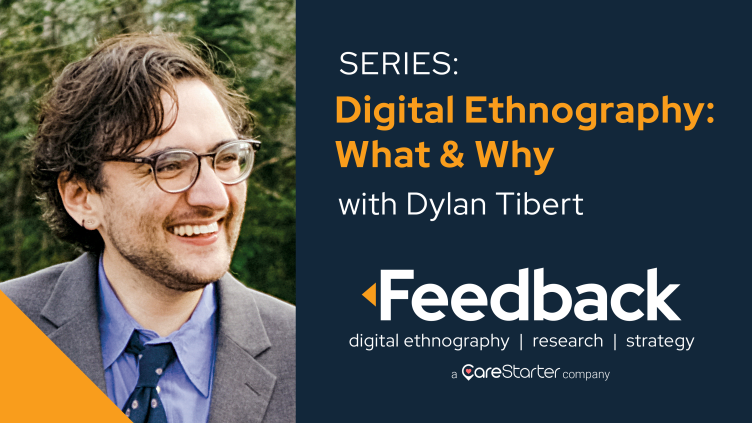
Urgency to arm organizational leadership with “data-driven” decision-making is all around, and even more abundant are the data solutions rising every day to meet that need – and while these engagement dashboards, analytic models, AI tools, and other tech answers that oversaturate the business intelligence space are undoubtedly a big part of the puzzle, one element is often under-utilized, under-developed/invested, and put on the backburner: the power and potential of human analysis. This is where digital ethnography comes in – not as a replacement for tech, but as an X-factor that leverages and evolves with digital technologies, rooted by human behavioral expertise and core ethnographic methodologies, to make it all make sense together. There’s a Voltron analogy in here that our Chief Behavioral Officer Dean Browell is dying for me to make.
While ethnography is a tool that is only as valuable as the methodology and perspectives you bring to it, this is the definition that fits our work nicely:
“Ethnography is the study of social life as it happens. It involves immersing oneself in a form of life, as a member of a community or group. When an ethnographer wants to understand something she or he does it by ‘being there’ over time, watching life unfold and events take place. However, sometimes, but less often, ethnographers will do their work vicariously by immersing themselves virtually (through the internet) or by doing very in-depth historical analysis.”
“Ethnographic methods are pretty much the same methods we all use to make sense of the world around us in our own lives. Ethnographers watch, experience, absorb, live, breathe, and inquire about a culture, lifestyle, event, case, group, or other phenomenon. But ethnography is more than being there, and more than common sense; it should always be careful, thoughtful, scientifically rigorous, systematic, and at least to some extent objective. It should be informed by theories about how social life works, that help the ethnographer know when she has found things she can trust, rely on, or share with others with confidence.”
– Dr. Karen O’Reiley, author of Ethnographic Methods
Many habitually reduce behavioral sciences to a purely academic game, or as less valuable than/incompatible with harder, more quantifiable sciences – this is a fundamental misunderstanding and a grave mistake, the cost of which are the fortunes spent stockpiling dragon hoards of data that nobody quite knows how to turn into actionable, accurate insights. No matter how much data you have, how sophisticated AI tools become, without investment in human-centered analysis you’re going to miss your mark time-and-time-again. Far beyond surveys, this means interdisciplinary teams equipped to consider the nuances of behavioral sciences in conjunction with all these tech tools and data hoards, grounded by ethnographic studies into real public sentiment – the treasure troves of discussion data that are out there on the internet, everyone is trying to capitalize on, but nobody seems to be able to utilize effectively.
In this series, I’m excited to dive into why our model of digital ethnography, ever-evolving with internet behaviors, channels, and technologies and unconstrained to one disciplinary perspective (not just social/cultural anthropology!), is so effective at delivering bleeding edge insights about any audience you can think of – answering burning questions that may be holding back your decision-makers, or resolving any confusion around existing data that has you running in circles. Stay tuned!
Digital Ethnography What & Why Series – Coming up next:
- Humans on the Internet – Social, Cultural, & Behavioral Listening as an Engine for Analytics
- Interdisciplinary Perspective – Empirical and Relational Expertise United Through Anthropology
- Digital Ethnography – Adaptive, Reactive, Accessible, Actionable & Resourceful
- Fake News and Hot Takes – Accounting for Bias and Misinformation in Online Data
- Comparison to Surveys, Dashboards, and MRS Types
- The Bottom Line
